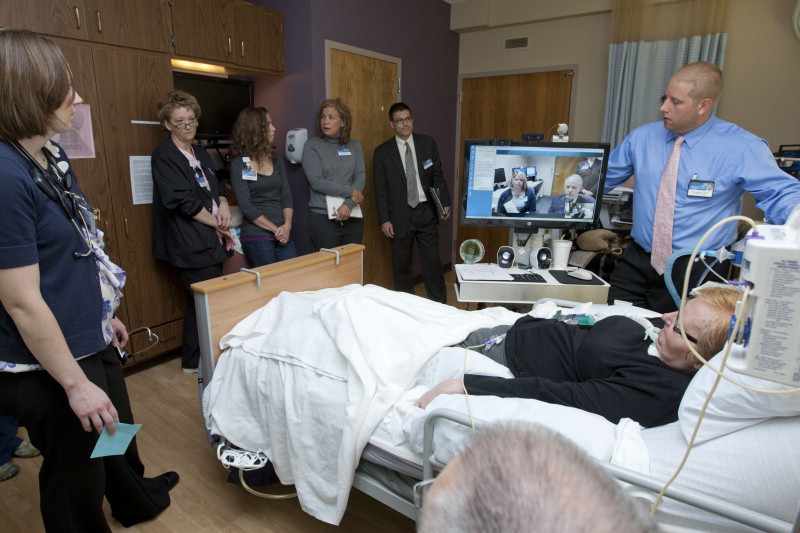-
How Patients Can Win With Telemedicine

This article was recently shared with Mayo Clinic employees.
__________________
In an editorial in The Pioneer Press and his keynote address at this year’s annual American Telemedicine Association conference, Mayo Clinic president and CEO Dr. John Noseworthy asserted that the future of health care delivery is very much linked to the increased use of telemedicine. The messages are part of a Mayo Clinic effort to advance telemedicine — the remote delivery of health care through a secure video or computer link — by eliminating administrative and regulatory barriers.
In partnership with Mayo's Center for Connected Care, the Division of Government Relations and local institutional leaders have led successful efforts in Minnesota, Arizona and Wisconsin to eliminate costly barriers to the use of telemedicine. The efforts focused in large part on raising awareness among legislators of how telemedicine can increase access to care while lowering the cost of care.
In his keynote address at the American Telemedicine Association meeting in Minneapolis, Dr. Noseworthy described how Mayo Clinic is using telemedicine to enable Mayo specialists to work remotely with Mayo Clinic Care Network physicians to extend care to 10 million patients across the world. This connection helps the care network's physicians to treat patients locally 80 percent of the time, reducing the need for them to travel to a distant medical center. “This prevents the typical, expensive churn and waste that can happen when a patient is referred from specialist to specialist in a local market," said Dr. Noseworthy. "That’s a win for us in health care, but most importantly, it’s a win for our patients. The more we can drive out waste, drive up the quality of at-home care, and improve the outcomes, the better off our patients will be.”
“This prevents the typical, expensive churn and waste that can happen when a patient is referred from specialist to specialist in a local market," said Dr. Noseworthy. "That’s a win for us in health care, but most importantly, it’s a win for our patients. The more we can drive out waste, drive up the quality of at-home care, and improve the outcomes, the better off our patients will be.”
While reiterating Mayo’s commitment to telemedicine in both his address and the subsequent editorial in The Pioneer Press, Dr. Noseworthy challenged elected officials to do more to reduce barriers to telemedicine. He applauded the actions of the Minnesota legislature, which, in 2015, passed two laws that eliminate some administrative barriers to advancing use of telemedicine. These laws allow telemedicine to be reimbursed as other health care services and reduce red tape for Minnesota physicians to obtain a medical license in other states. This year Mayo also advocated for similar laws that passed in both Arizona and Wisconsin.
Mayo continues to advocate for a single federal solution to advance telemedicine. In closing his editorial, Dr. Noseworthy called on policy makers and health care providers to continue to advocate for increased use of telemedicine technology, which he says has the power to transform the future of health care.
Promoting telehealth services and policies has been and will continue to be one of Mayo Clinic’s enterprise-wide strategic imperatives.







